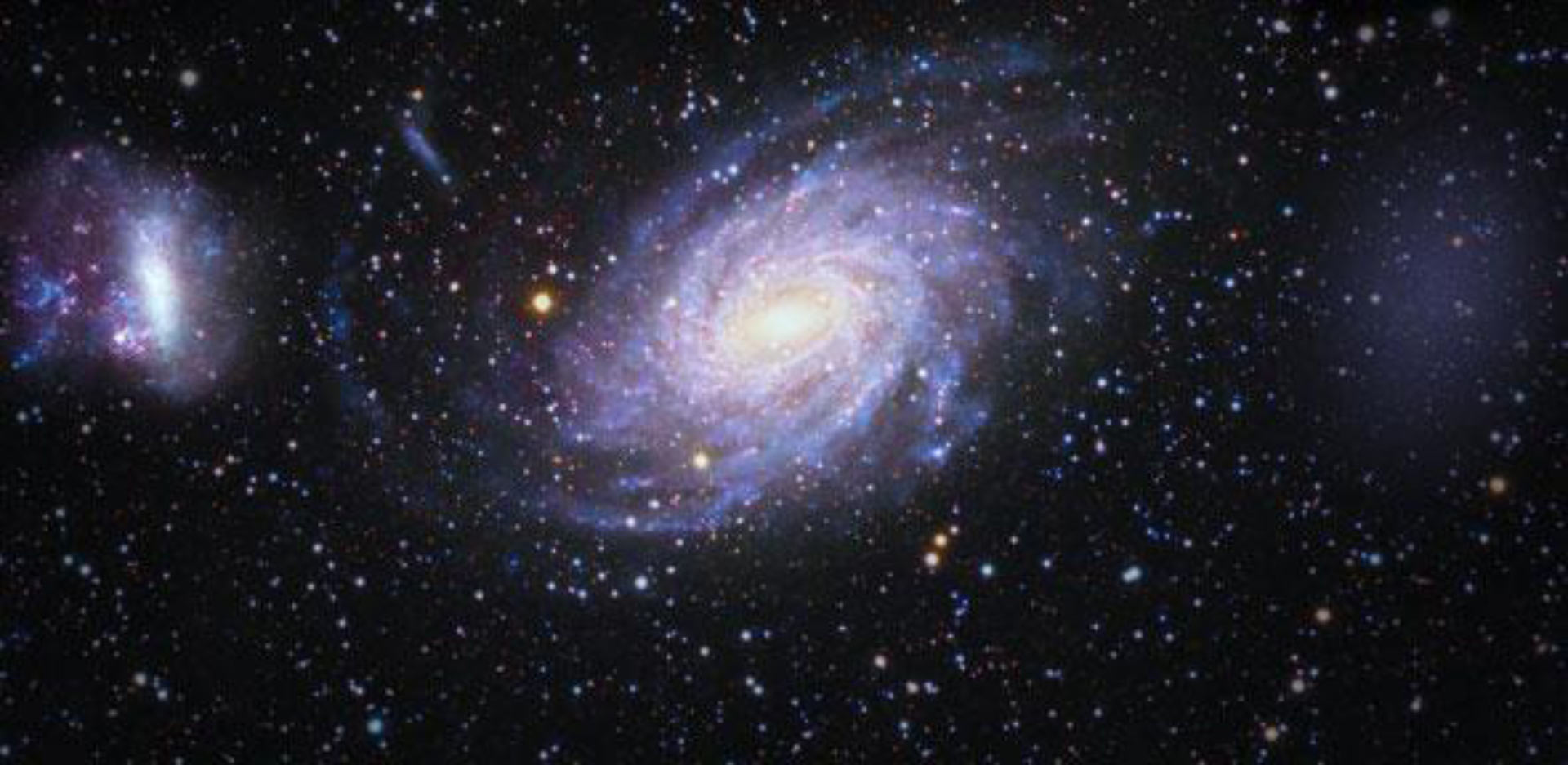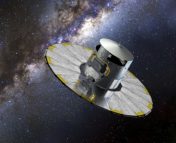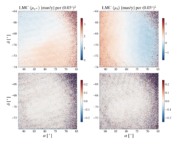Title: The hidden giant: discovery of an enormous Galactic dwarf
satellite in Gaia DR2
Authors: G. Torrealba, V. Belokurov, S. E. Koposov, T. S. Li, M. G. Walker, J. L. Sanders, A. Geringer-Sameth, D. B. Zucker, K. Kuehn, N. W. Evans, W. Dehnen
First Author’s Institution: Institute of Astronomy and Astrophysics, Academia Sinica, Taipei, Taiwan
Status: Submitted to MNRAS (open access)
An international team of scientists has discovered a curious new galactic neighbor. Antlia 2 (or Ant 2 for short) is a dwarf galaxy unlike any previously detected. Its area is similar to that of the Large Magellanic Cloud (LMC; the largest satellite of the Milky Way) and about a third the size of the Milky Way itself, but it contains about 10,000 times fewer stars than the LMC. This relatively small number of stars spread across this large area causes Ant 2 to appear almost ghostly – a faint, diffuse shadow of a galaxy (Figure 1). For this reason, along with the fact that Ant 2 is partially hidden behind the bright disk of the Milky Way, Ant 2 was much more difficult to detect than similarly-sized galaxies like the LMC. Furthermore, this hard-to-find, unusual galaxy does not fit neatly into commonly accepted theories; its discovery opens up exciting new questions about dark matter and galaxy formation.

Figure 1. An illustration comparing the LMC (left), Milky Way (center), and Ant 2 (right). Ant 2 is similar in size to the LMC, but is much fainter and more diffuse, and for this reason was much more difficult to detect. (Source: V. Belokurov, Marcus Davies, Gail Davies, Robert Gendler.)
Discovery
Most dwarf galaxies are discovered using only positions, brightnesses (magnitudes), and colors of stars, but Ant 2 was invisible to these usual methods. The discovery of Ant 2 required the recently-released data from the Gaia satellite, particularly the precisely measured velocities of individual stars, and the catalog of variable stars. (For more on Gaia check out these Astrobites.) In fact, Ant 2 was discovered at the Gaia Sprint Week, a gathering of astronomers soon after the data release to facilitate collaboration on the search for exciting new insights in the Gaia data. The team who worked together on this paper decided to search the sky for clusters of RR Lyrae, a type of variable star commonly found in dwarf galaxies. RR Lyrae have well-known absolute magnitudes, and therefore easily-measured distances. This means that it is possible to search for clusters of RR Lyrae in 3 dimensions (position on the sky and distance). The team discovered a small group of stars clumped together in 3D space, and with similar velocities – a promising sign of a hidden stellar system. Sure enough, by selecting all kinds of stars (not just the variable ones) with similar velocities and positions, they revealed a ghostly signal (Figure 2).

Figure 2. These plots show the position, color/magnitude, and velocity of Ant 2 as seen in the Gaia data. Left: This plot shows stellar density across the region of the sky near Ant 2. Darker bins correspond to a higher density of stars. The dark blob is Ant 2. The red and yellow points are RR Lyrae stars thought to belong to Ant 2, and the red oval is a best-fit gaussian to the spatial distribution of the galaxy. Center: The x-axis is the stellar color, and the y-axis is magnitude (or brightness). The red rectangle highlights a high-density region of stars corresponding to Ant 2. Right: This figure illustrates the velocities of stars around Ant 2. The central blob contains the stars belonging to Ant 2. As in the right-hand figure, the points are RR Lyrae, and the red oval is a gaussian fit to the velocity signal. (Source: Figure 1 in the paper.)
Spectroscopy
After discovering this exciting new system, the team was able to study it more carefully by combining various datasets. Gaia is powerful because of its precise measurements of stellar positions and velocities (astrometry), but other telescopes are better for measuring the magnitudes and colors of stars (photometry) and can see fainter stars than Gaia. The team therefore pieced together available images of the region to precisely determine the magnitudes and colors of each star. All of this information together – the positions, velocities, colors, and magnitudes of stars – allowed the team to pick out individual stars that were likely to belong to Ant 2. They then observed the spectra of these stars with the Anglo-Australian Telescope. These spectra revealed the radial velocity (via the Doppler effect) and metallicity (chemical composition) of each star. The velocity and metallicity of Ant 2 enable lots of interesting analyses, including the use of the velocity dispersion to measure the total, dark matter-dominated mass. This measurement reveals that the ratio between Ant 2’s total mass and its stellar mass is similar to that of other dwarf galaxies, but its gigantic size means that the density of dark matter is extremely low.
Implications
This curious system may have very interesting implications for our understanding of galaxy formation and dark matter physics. To review, the combined observations of Ant 2 reveal that it is huge (on par with the largest satellite of the Milky Way), but incredibly faint, and that it has a very low dark matter density. This unusual nature may point towards exciting new evidence for non-standard dark matter theories, like fuzzy dark matter (read more in this Astrobite). However, there are other possible explanations, such as distortion by the gravitational field of the Milky Way and the side effects of star formation. However, even these more mundane explanations point to exciting gaps in our understanding of galaxy formation. Ant 2 may be the first of a whole new population of ghostly galaxies.




